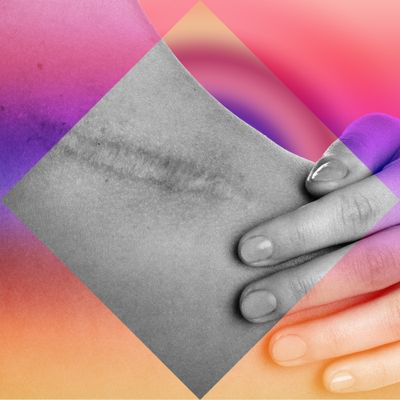
This column first ran in Valerie Monroe’s newsletter, How Not to F*ck Up Your Face, which you can subscribe to on Substack.
Q: Are there any recommendations for minimizing new scar wounds? I recently had a melanoma removed (stage 1A, thank goodness) on my back, and the scar is pretty long, about four inches. Dr. Google has recommendations from low end to high end (Mederma, less than $20 and available at drugstores; SkinCeuticals, over $100 via specialty retailers) and everything in between. I know nothing will remove the scar completely, but what ingredients should I look for and in what potency?
A: First, I’m so glad you caught your skin cancer early, dear Reader, and wish you a quick and full recovery. As for the rest of you HNTFUYF-ers, please have skin-cancer checks regularly. Even if you wear sunscreen religiously! In Hawaii recently, I wore SPF 50 sunscreen and a UPF 50 shirt and I still got tan.
As for your scar-related question, dermatologist Heidi Waldorf, M.D., has a few excellent suggestions, but at the end of the day, all scars mature over time and some will heal better than others based on variables like:
- Your genetics
- The size of the wound
- Tension (pulling) on the edges
- Its location (the chest, upper back, and shoulders are more likely to develop hypertrophic and keloid scars)
- Your post-op activity (movement that could pull the wound open)
- Infection
Ask the doctor who performed the surgery for product recommendations and care instructions.
Waldorf’s first piece of advice is to ask your doctor for their recommendations — they will likely advise you to get a topical scar treatment, which is made of silicones like dimethicone. How does it work? Waldorf says that topical silicone forms a barrier that increases hydration and decreases inflammation, which can impair healing.
Get a topical scar treatment
Topical silicones are available as self-adhesive pads, gels, and liquids. The best kind for the scar depends on its size and location — its visibility, its shape, whether there’s movement in the area, etc. Though some surgeons prefer silicone pads because of the consistent coverage, pads may be difficult to keep in place — and they’re clearly visible on exposed skin. An invisible cream or gel is more practical, especially if the scar is on the face, and can be used with sunscreen and even makeup.
The difference between high- and low-priced products? “The type of silicone and its feel — but there’s no evidence that one is preferable over another. Depending on your scar’s location and your skin type (dry or oily), you may prefer a more moisturizing or matte formulation,” says Waldorf.
Some examples Waldorf says you might consider include Serica Moisturizing Scar Formula, ScarAway Scar Treatment Gel or Sheet, Strataderm Scar Therapy Gel, and Silagen Silicone Gel + SPF 30. She notes that even if a product contains sunscreen, you should use additional sun protection. She frequently recommends Serica because it’s moisturizing and can be used to massage the scar (which can help resolve thicker scars but shouldn’t be started until cleared by your physician, generally six to eight weeks after superficial suture or staple removal). She recommends Strataderm because it’s quick-drying and non-sticky and comes in a range of sizes, so you can buy what you need for either a large or small scar. (She also likes Stratacel for wounds.)
Mederma is in a separate category but used the same way. Its primary ingredient is an onion extract that may have anti-inflammatory effects in a base containing moisturizers, alpha hydroxy acid, plus a smaller amount of silicone. “Some physicians like Mederma to reduce redness because of the additional anti-inflammatory ingredient,” says Waldorf, who often has patients alternate it with another silicone product.
Don’t give up on the application
All of these products take two months of regular use (usually twice a day) to improve scars and are most helpful when used earlier in a recovery process (but not before fully healed and cleared by a physician), Waldorf says.
For a hypertrophic or keloid scar, consider more than a topical treatment
Vascular lasers like the Vbeam can help reduce redness. Injection of a combination of triamcinolone (a steroid) and fluorouracil (a medication) — or for larger scars, its application immediately after a laser-assisted drug delivery — can reduce scar thickness, Waldorf says. (I had laser treatment and an injection to reduce a scar resulting from MOHS surgery on my face eight years ago; the scar is barely detectable.)
You have options, dear Reader, from over-the-counter to an in-office procedure if your scar is starting to look gnarly. But your surgery is done and your prognosis is good: The worst is (literally) behind you!
Originally published on August 6.





